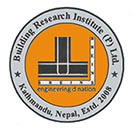
Today (NST)
Tuesday, Jun 17, 2025
Smart Search
Please post in your Technical Queries, Comments & Suggestions to Contact us......
Advertisement

For Advertisement
|
|
| Subscribe to BREINS Sci-Tech |
| Visit this group |

Seismic Resistant Design
Seismic Control Systems
Seismic control systems refer to those modern techniques in Earthquake Resistant Design that prevent or divert a major portion of earthquake energy from entering into the main structural system of the structure by applying various techniques. Generally there are three types of Seismic Control Systems:
Basically, Passive Seismic Control System works on Energy Transformation principle. Whereas, Active Control System relies on Counter-Balancing the motion of the structural system by means of automated, rather sophisticated Counter-Weight system. Hybrid Seismic Control System applies both of these techniques. Major objective of all of these systems is to reduce the Strain Energy of vibrating structures in earthquakes.
Passive Seismic Control systems are passive in that they do not require any additional energy source to operate and are activated by the earthquake input motion only. Following are its examples;
Energy Dissipation Devices are the specially designed mechanical systems to dissipate a large portion of the earthquake input energy in specialized devices or special connection-details which deform or yield during earthquakes. In general, energy dissipation devices are characterized by its capability to enhance energy dissipation in structural systems to which they are installed so that the structure has to resist lesser amount of earthquake induced forces.
Energy dissipation devices operate on principles such as frictional sliding, yielding of metals, phase transformation in metals, deformation of visco-elastic solids or fluid and fluid orificing (Fig-20) in fluid viscous dampers. Accordingly, there are following types of Energy Dissipation Devices;
Friction Dampers
Mettalic Yielding Dampers
Visco-Elastic Dampers
Fluid Viscous Dampers
Safety of structural systems is hence achieved; basically by conversion of mechanical energy induced in the structural system into the thermal energy within these energy dissipation devices installed. The entire process is also known as Damping as energy of the vibrating structure gets dissipated out of the main structural system at these Dampers in form of heat which ultimately gets transferred to the surroundings.
Addition of energy dissipation devices enhance the damping characteristics; as a result of which amplitude of motion of the structure is dampened significantly immediately after the initiation of ground motion or after the exceedance of structural motion's thresold; thereby reducing the forces on structural members. Enhancement of damping is gaining a wide popularity and is established as a major approach in Earthquake Resistant Design.
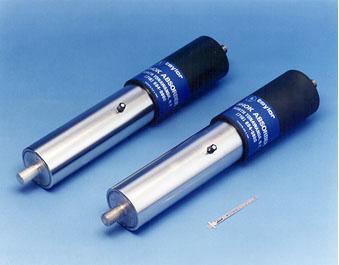
(Fluid Viscous Dampers, FVD)
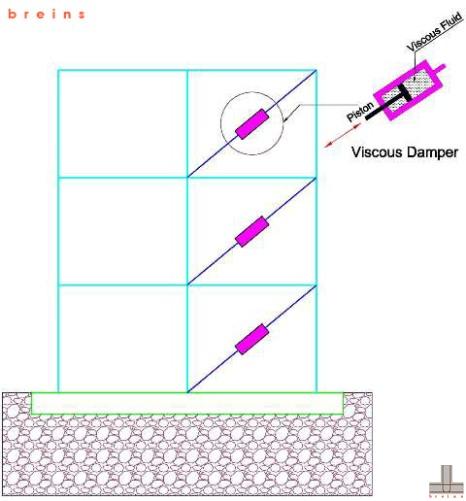
Fig-20 (Fluid Viscous Damper above and a model representation of building with Fluid Viscous Dampers, FVD, installed)
Base Isolation Techniques
Isolation of an entire structure's motion from the shaking ground below using flexible interface between the structure and its foundation is another powerful technique; called Base Isolation (Fig-22).
Basic Principle of Seismic Base Isolation is to increase the Structure's Natural Time Period leading to decrease its Natural Frequency of Vibration to that of its corresponding fixed based structures (Fig-21) and that of the predominant period of soil at the site too.
Base Isolation (Fig-22) uses base isolator layer at its base that has high stiffness along the vertical direction but low lateral stiffness.The isolation system shifts the fundamental time period of the structure to a large value and dissipates the energy in damping, limiting the amount of force that can be transferred to the superstructure. In this way, the superstructure can be decoupled from earthquake induced ground motions and its tremendous energy. Decrease in frequency of vibration also decreases the pseudo-acceleration of structures thereby reducing the base shears.
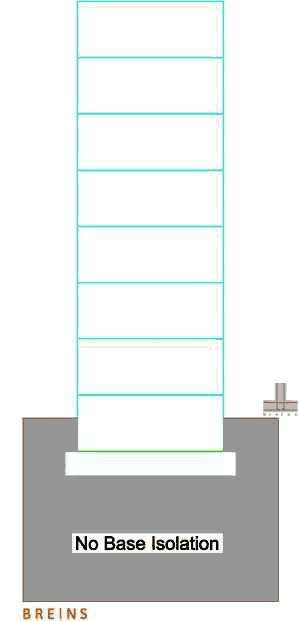
Fig-21 (Performance of the conventional building system : Without base isolation. Base un-isolated buildings show considerable differential deformation throughout the building's height)
Base isolated buildings have much longer first-mode time period of vibration than its fixed-base structure. The higher modes are essentially not excited by the ground motion, although their pseudo accelerations are large; because their modal static responses are very small. The primary reason behind the effectiveness of base isolation in reducing earthquake-induced forces in a building is the above-mentioned lengthening of the first-mode period.
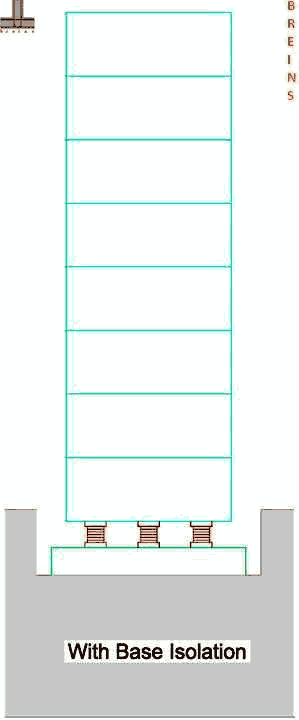
Fig-22 (Performance of the building system with Base Isolation : A Base isolated building has rigid body motion hence no differential deformation along the building's height, so highly reduction in strain energy of the system)
Dynamic Oscillators
Also, transformation of energy among the vibrating modes by means of Dynamic Oscillators is another example of Passive Seismic Control systems. This method includes supplemental oscillators which act as dynamic absorbers.
Tuned Mass Dampers, TMD (Fig-23) fall in this category. TMD, with its frequency of vibration tuned to the exciting frequency is attached/connected to the main structural system. During excitation, TMD simply moves in out of phase to that of the main structural system thereby imparting opposing inertial forces to that of the external vibrating forces acting on the structure. While doing so, TMD is simply maintaining its inertial property.
In this way, motion of the main structural system almost ceases or highly diminishes. TMD's are best suited for Wind, Machine induced Vibrations rather than the Earthquake induced vibrations.
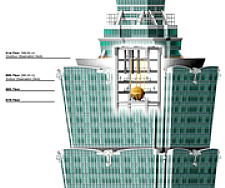
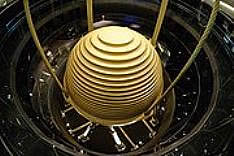
Fig-23 (Tuned mass damper, TMD, in the world's second highest, 449.20 m, Taipei 101 building. The world largest TMD, measures 5.50 m in dia, & Weighs 728 tons suspended few floors below top of the building)
It is important to note that the passive energy dissipation systems described here are "new" technologies when applied to civil engineering structures, but they have been used in mechanical engineering applications for many years. There are numerous situations where dampers, springs, torsion bars, or elastomeric bearings have been used to control vibration or alter the dynamic behavior of mechanical systems. Several examples include vehicular shock absorbers or spring mounts that provide vertical vibration isolation for military hardware.
This system provides seismic protection by imposing forces on a structure that counterbalance the earthquake induced forces. This system is active in that it requires an energy source and computer-controlled actuators to operate special braces of tuned-mass dampers located throughout the building. Active system is more complex than passive systems since it relies on computer control, motion sensors, feedback mechanisms, and moving parts which may require service or maintenance. Also, Active seismic control system needs an emergency power source to ensure that it will be operable during a major earthquake and any immediate aftershocks.
Active seismic control is comparatively newest invention in the field of seismic control systems that applies a three dimensional network of counter-balancing hydraulic operated weights that are controlled by sensors. When an earthquake hits the building, sensors located within the building determine the direction and weight of counter balancing systems that is to be moved in an opposite direction to that of earthquake induced motion; so that building remains motionless, hence no damage at all to building. This technology is highly sophisticated and expensive one and may not be feasible one for small projects even in far future.
This system combines features of both passive and active seismic control systems. In general, it has reduced power demands, improved reliability, and reduced cost when compared to fully active systems.
For instance, Base Isolation is often used in conjuction with computer-controlled actuators to operate tuned-mass dampers located throughout the building. Hybrid seismic control systems utilize advantages of both the passive and active seismic control systems.